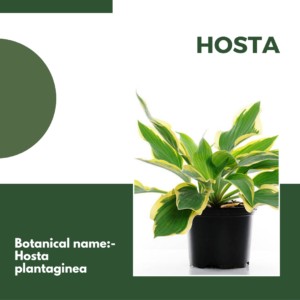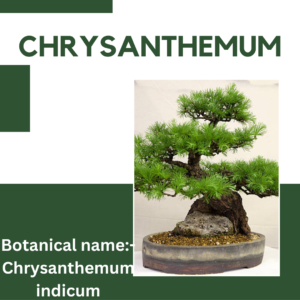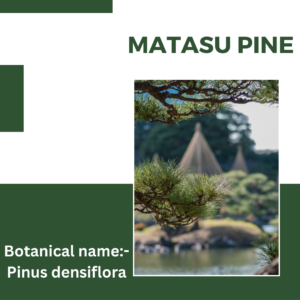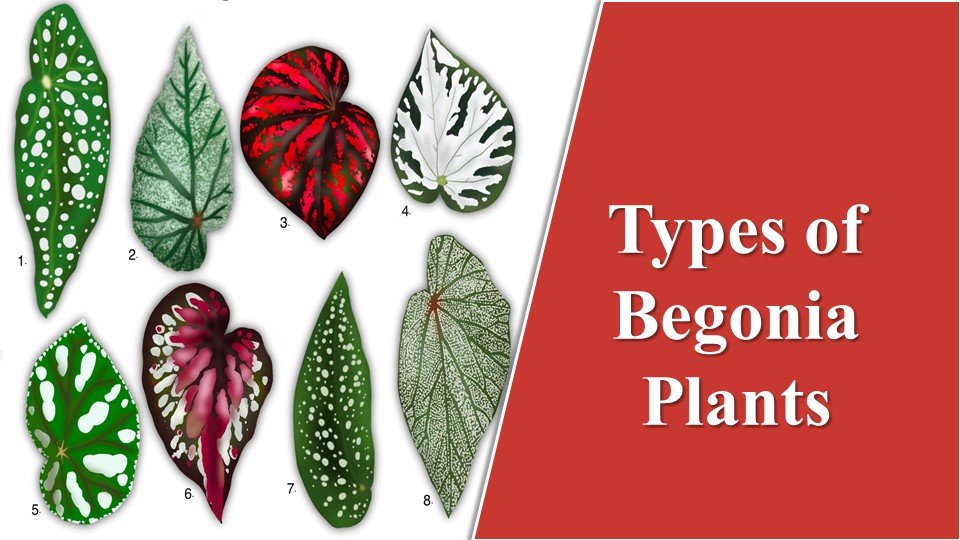Top 24 Mesmerizing Japanese Indoor Plants for Home Decor In 2023
Are you looking for a way to add a touch of nature to your home or office? Look no further than Japanese indoor plants!!
The beautiful and unique varieties of Japanese indoor plants have become increasingly popular in recent years, thanks to their striking appearance and numerous health benefits. In this article, we’ll take a closer look at some of the most popular Japanese indoor plants, explore their benefits, and offer tips for caring for them.
So whether you’re a seasoned plant enthusiast or just getting started, read on to discover the world of Japanese indoor plants. At the end of this blog post, you’ll be able to enhance the beauty of your indoors with the appropriate choice of Japanese indoor plants.
Finding the perfect plant that suits the environment and is easy to maintain becomes a really difficult task when there are so many varieties of plants in the market.
This blog post consists a list of the 25 most famous and mesmerizing Japanese indoor plants which have been researched from over 20 websites and based on the research, we present you the information for ease of your choosing.
LIST OF JAPANESE INDOOR PLANT:-
- SUGI
- JAPANESE AUCUBA
- JAPANESE MAPLE BONSAI
- FICUS BONSAI
- HYDRANGEA
- JAPANESE PEACE LILY
- SAGO PALM
- JAPANESE IVY
- JAPANESE ARALIA
- JAPANESE SWEET FLAG GRASS
- HOSTA
- CHRYSANTHEMUM
- JAPANESE LARCH BONSAI
- JAPANESE STONECROP
- JAPANESE BIRD NEST FERN
- JAPANESE PAINTED FERN
- JAPANESE AZALEAS
- BLUE JACRANDA BONSAI
- JAPANESE WEEPING WILLOW
- PHILODENDRON
- MATASU PINE
- JAPANESE CAMELLIA
- SPINDLE TREE
- KOKEDAMA
Sugi
Sugi, a common name for Cryptomeria japonica, is a beautiful Japanese indoor plant with unique appearance, elegant form, and cultural significance. It has a tall, upright form, with a strong central trunk that branches out into smaller limbs, giving it an elegant and sophisticated look. Unique feature:- is its ability to change colour during different times of the year.

Japanese Aucuba
Japanese aucuba, also known as Aucuba japonica, is an evergreen shrub native to Japan. The plant has large, glossy leaves that are often variegated with yellow or gold markings. It produces small, reddish-purple flowers in the spring, but they are not particularly showy. Japanese aucuba is a relatively low-maintenance plant that can tolerate a wide range of growing conditions. Finally, the female plants of Japanese aucuba produce bright red berries in the fall, which can add a splash of color to the landscape. The berries are often used in floral arrangements and can also attract birds to the garden.

Japanese Maple Bonsai
Japanese maple bonsai, also known as Acer palmatum bonsai, is a small tree that is grown and trained to have a miniature, artistic form. The Japanese maple is a popular species for bonsai because of its delicate, ornamental leaves and its small size, which makes it well-suited for growing in a container. They thrive in a bright location with filtered sunlight and well-draining soil that is kept moist but not waterlogged. Overall, Japanese maple bonsai are prized for their beauty and delicate appearance, as well as for the intricate skill required to cultivate and maintain them. They make a stunning addition to any bonsai collection or indoor space.

Ficus bonsai
Ficus bonsai, also known as Ficus retusa bonsai or Indian laurel fig bonsai, is a popular species of bonsai tree that is native to Southeast Asia. The ficus bonsai is known for its lush, shiny leaves and its ability to adapt to a variety of growing conditions. The tree should be placed in a location that receives bright, indirect sunlight, and it should be watered regularly to keep the soil moist. Ficus bonsai require regular pruning and shaping to maintain their miniature size and to promote healthy growth. With proper care and attention, ficus bonsai can make a beautiful and unique addition to any indoor or outdoor space.

Hydrangea
Hydrangea, botanically known as Hydrangea paniculata, is a genus of flowering plants that is known for its large, showy blooms and attractive foliage. Hydrangeas are deciduous or evergreen shrubs that can range in size from small bushes to large trees. They produce large, showy clusters of flowers. In addition to their beautiful flowers, hydrangeas have attractive leaves that are often shiny and serrated. One unique feature of hydrangeas is their ability to change color based on the acidity of the soil

Japanese Peace Lily
The Japanese peace lily, or Spathiphyllum kochii, is a type of peace lily that is native to tropical regions of Central and South America, but has also become popular in Japan and other parts of Asia. It is a tropical plant with large, glossy, dark green leaves that grow from a central crown. The plant produces striking, white flowers that are similar to those of other peace lilies, but are often larger and more ornamental. One unique feature of the Japanese peace lily is its ability to purify indoor air. Overall, the Japanese peace lily is a beautiful and easy-to-care-for plant that can add color and interest to any indoor space while also providing health benefits.

Sago Palm
The sago palm, also known as Cycas revoluta, is a tropical plant that is native to Japan and is often used as an ornamental plant in gardens and indoor spaces. One unique feature of the sago palm is its ability to store water and nutrients in its trunk, which allows it to survive periods of drought and other harsh growing conditions. Sago palms are relatively easy to care for and require minimal pruning or maintenance. However, they are slow-growing and may take several years to reach their full size, so they require patience and a long-term commitment. Overall, the sago palm is a unique and attractive plant that can add a tropical touch to any garden or indoor space, but it should be handled with caution due to its toxic nature.

Japanese Ivy
Japanese ivy, also known as Hedera rhombea or Hedera tussilaginifolia, is a species of evergreen climbing plant that is native to Japan, Korea, and China. The plant also produces small, greenish-yellow flowers in the summer and fall, although they are not particularly showy. One unique feature of Japanese ivy is its ability to absorb and filter pollutants from the air, making it an effective plant for improving indoor air quality. It is also known for its ability to reduce noise pollution by absorbing sound waves. Overall, Japanese ivy is a versatile and attractive plant that can add color, interest, and environmental benefits to any garden or indoor space. However, it should be noted that the plant is toxic if ingested, so it should be kept out of reach of children and pets.

Japanese Aralia
Japanese aralia, also known as Fatsia japonica, is an evergreen japanese indoor plant shrub native to Japan and South Korea. The plant produces clusters of small, white flowers in the fall, which are followed by black berries that attract birds and other wildlife. One unique feature of Japanese aralia is its ability to purify indoor air by removing harmful toxins such as benzene, formaldehyde, and trichloroethylene from the air. Overall, Japanese aralia is a versatile and attractive plant that can add color, texture, and environmental benefits to any garden or indoor space. Its tropical appearance and low-maintenance nature make it a popular choice for many gardeners and plant enthusiasts.

Japanese Sweet Flag Grass
Japanese sweet flag green, also known as Acorus gramineus, is a low-growing Japanese plant. The leaves of the Japanese sweet flag green are long, narrow, and grass-like, with a bright green color and a distinctive, sweet fragrance. One unique feature of Japanese sweet flag green is its ability to purify and freshen the air, making it an ideal plant for improving indoor air quality. The plant releases volatile oils that have been shown to have antimicrobial properties and can help reduce indoor air pollution. Overall, Japanese sweet flag green is a unique and attractive plant that can add color, fragrance, and environmental benefits to any garden or indoor space. Its versatility and low-maintenance nature make it a popular choice for many gardeners and plant enthusiasts.

Hosta
Hostas (Hosta spp.) are typically grown as outdoor plants, but some varieties can also be grown as indoor plants. Hostas are prized for their attractive foliage, which comes in a wide range of colors, shapes, and sizes. This makes hostas a visually stunning addition to any indoor space. Hostas are known for their air-purifying properties, and can help to remove harmful toxins from the indoor environment. Overall, hostas make an excellent choice for indoor plants due to their attractive foliage, low-light tolerance, ease of care, air-purifying properties, and pest resistance.

Chrysanthemum
Chrysanthemums (also known as mums) are commonly grown as indoor plants in Japan. They are popular for their showy, colorful blooms and easy care requirements. In Japan, chrysanthemums have a special cultural significance and are often used in traditional arts, such as flower arranging and tea ceremonies. Chrysanthemums come in a wide range of colors, including pink, yellow, white, red, and orange. They can also be found in bi-color and multi-color varieties, making them a versatile and colorful addition to any indoor space. Overall, chrysanthemums are a versatile and easy-to-care-for indoor plant with a long blooming season and cultural significance in Japan. They are a great choice for adding color and interest to any indoor space.

Japanese larch bonsai
The Japanese Larch, or Larix kaempferi, is a unique and beautiful species that has several distinctive features as a bonsai. This gives it a unique appearance during the autumn season when its needles turn golden yellow before falling off. They grow in clusters along the branches and are a bright green color during the growing season. The bark of the Japanese Larch is a reddish-brown color and has a scaly texture that becomes more prominent as the tree ages. This gives the tree a unique and attractive appearance. Overall, the Japanese Larch bonsai is a unique and beautiful species with delicate needles, graceful growth habit, and cold-hardiness. With proper care and attention, it can make a stunning addition to any bonsai collection.

Japanese stone crop
Japanese stonecrop, or Sedum ternatum, is a succulent japanese indoor plant plant that is native to Japan. Japanese stonecrop is a small plant producing small, star-shaped flowers in the summer. The flowers are usually pink or white and attract bees and other pollinators. Overall, Japanese stonecrop is a low-maintenance, drought-tolerant plant that is perfect for rock gardens or as a ground cover in dry, sunny locations. Its small size, fleshy leaves, and star-shaped flowers make it a unique and attractive addition to any garden.

Japanese bird nest fern
Japanese bird nest fern, or Asplenium nidus, is a popular Japanese indoor plant in Japan and around the world. In nature, Japanese bird nest ferns grow as epiphytes, meaning they attach themselves to other plants or trees for support. This makes them well-suited for growing in containers, as they do not require soil to thrive .They prefer bright, indirect light and moist soil, but can also tolerate lower light levels and periods of drought. Like many other ferns, Japanese bird nest ferns are effective at purifying the air of pollutants, making them a great plant for improving indoor air quality. Overall, Japanese bird nest ferns are a unique and attractive indoor plant that is easy to care for and can provide a tropical touch to any interior space. Their large, wavy fronds, epiphytic growth habit, and air-purifying properties make them a popular choice for indoor gardeners in Japan and around the world.

Japanese painted fern
Japanese painted fern, or Athyrium niponicum, is a popular Japanese fern species native to Japan and East Asia that is often grown as an indoor plant. The most distinctive feature of Japanese painted fern is its attractive foliage, which is a silvery-grey color with burgundy highlights. Japanese painted fern can provide seasonal interest throughout the year, with new fronds emerging in the spring and the foliage changing colors in the fall. Overall, Japanese painted fern is a unique and attractive indoor plant that is easy to care for and can provide a touch of elegance and sophistication to any interior space. Its attractive foliage, shade-tolerance, low maintenance requirements, compact size, and seasonal interest make it a popular choice for indoor gardeners in Japan and around the world.

Azaleas
Azaleas, botanically known as Rhododendron, are a popular flowering shrub that can be grown as an indoor plant in Japan.Azaleas are known for their showy, colorful flowers that bloom in the spring. The flowers come in a variety of colors, including pink, red, white, and purple, and can add a pop of color to any indoor space. Azaleas have attractive evergreen foliage that provides year-round interest, even when the plant is not in bloom. The foliage is dark green and glossy, with a leathery texture. Overall, azaleas are a unique and attractive indoor plant that can provide year-round interest and colorful blooms in the spring. Their shade-tolerance, evergreen foliage, and pruning requirements make them a popular choice for indoor gardeners in Japan and around the world.

Blue jacaranda bonsai
Blue Jacaranda, botanically known as Jacaranda mimosifolia, is a popular Japanese indoor plant that is also grown as a bonsai in Japan. Blue Jacaranda produces large clusters of stunning blue-violet flowers in the spring and summer. These flowers are trumpet-shaped and can add a burst of color to any bonsai display. Overall, Blue Jacaranda bonsai is a unique and attractive tree species that can add a splash of color and natural beauty to any indoor garden. Its stunning flowers, fast growth, and drought tolerance make it a popular choice among bonsai enthusiasts in Japan and around the world.

Japanese weeping willow
Japanese Weeping Willow, also known as Salix babylonica, is a popular tree species in Japan that can be grown as an indoor or outdoor plant. In traditional Chinese medicine, the bark and leaves of the Japanese Weeping Willow tree have been used to treat a variety of health conditions, including pain, fever, and inflammation. In Japan, the Japanese Weeping Willow tree is a symbol of elegance, grace, and resilience. Overall, the Japanese Weeping Willow tree is a unique and attractive plant that can add a touch of elegance and natural beauty to any indoor or outdoor garden. Its graceful branches, fast growth, and symbolic meaning make it a popular choice among gardeners and bonsai enthusiasts in Japan and around the world.

Philodendron
Philodendrons, botanically known as Philodendron bipinnatifidum, are a group of popular Japanese indoor houseplants known for their lush, tropical foliage. It is highly known for its unique features. Philodendrons are known for their air-purifying abilities. They are particularly effective at removing formaldehyde, a common indoor air pollutant, from the air. Philodendrons are generally easy to care for and can tolerate a range of light levels, making them a great choice for indoor gardeners of all skill levels. Overall, philodendrons are a versatile and visually interesting group of plants that can thrive in indoor environments. Their varied leaf shapes, climbing abilities, air-purifying properties, low maintenance needs, and design versatility make them a popular choice among indoor gardeners.

Matsu Japanese pine
The Matsu Japanese Pine, botanically known as Pinus densiflora, is a popular Japanese tree used in Japanese gardens and is known for its unique features. The Matsu Japanese Pine is a resilient tree that can tolerate a wide range of growing conditions. It can grow in sandy or clay soils and can withstand high winds and extreme temperatures. In Japanese culture, the Matsu Japanese Pine is considered a symbol of longevity, strength, and steadfastness. It is often used in gardens and landscapes to convey these traits and to evoke a sense of calm and serenity. Overall, the Matsu Japanese Pine is a beautiful and unique tree that is highly valued in Japanese gardens and landscapes. Its elegant appearance, slow growth, changing needle colours, resilience, and symbolic meaning make it a popular choice among gardeners and landscapers alike.

Japanese camellia
The Japanese Camellia, botanically known as Camellia japonica, is a popular Japanese indoor plant native to Japan, and is known for its unique features, for example- Showy flowers. In Japanese culture, the Japanese Camellia is associated with love, affection, and admiration. It is often given as a gift to express these sentiments, and is also used in traditional tea ceremonies. Overall, the Japanese Camellia is a beautiful and versatile plant that is highly valued in Japanese culture and in gardens around the world. Its showy flowers, evergreen foliage, cold tolerance, symbolism, and versatility make it a popular choice for gardeners and landscapers alike.

Spindle tree
Spindle tree, also known as Euonymus europeanus, is a Japanese indoor plant that has certain unique features which make it a vibrant and ideal indoor plant. The fruits can be pink, red, or orange in color, and can remain on the plant for several months. Some species of spindle tree are used in traditional medicine to treat a range of ailments, including diarrhea, fever, and arthritis. Overall, spindle tree is a unique and attractive indoor plant that offers colorful foliage, ornamental fruits, low light tolerance, low maintenance, and potential medicinal benefits. It can be a great addition to any indoor garden or landscape design.

Kokedama
Kokedama seems to be an interesting name, right? Kokedama, botanically known as Crassula ovata, is a unique style of Japanese indoor plant where the plant’s root system is covered in a case in a ball of soil that is covered in moss, instead of being planted in a traditional pot. As an indoor plant, it has a unique appearance adding grace to the indoors. It is an eco-friendly alternative to traditional potted plants. Overall, kokedama is a unique and interesting way to incorporate indoor plants into your home decor, and its low-maintenance and eco-friendly features make it a popular choice for plant lovers.

WRAPPING UP:-
Japanese indoor plants mark the beauty and gracefulness of Japanese culture well. But the more they make the house beautiful, the more they are bound to get affected by various environmental factors. Proper care and maintenance should be taken while keeping them indoors.
Timely management and training-pruining is very important in keeping the plant indoors.
Japanese indoor plants are not only beautiful but also have many benefits. From improving air quality to reducing stress, these plants are a great addition to any home. Whether you are looking to add some greenery to your space or just want to create a relaxing environment, Japanese indoor plants are a great choice.
Remember to consider the lighting and watering needs of each plant and choose the ones that are best suited for your space. By bringing a little piece of Japan into your home with these plants, you can create a peaceful and calming atmosphere that will help you unwind and feel rejuvenated.
If you are still facing questions about anything regarding this topic, you can leave a comment with your queries and our team of experts would reach out to you with proper and reliable recommendations Want to browse more about indoor plants?
Thank you for reading.
- How to take care of Lavender Plants Indoors effectively
- 15 Types of Houseplants With Big Leaves
- Best 20 Types of Fuzzy Succulent Plants
- 15 Types of Ice Plants to Transform Your Garden into a Vibrant Oasis
- Top 20 Types of Begonia Plants to Cheer You up Everyday
- How to Care for Dawn Redwood Bonsai: Convert a Giant into Miniature.







